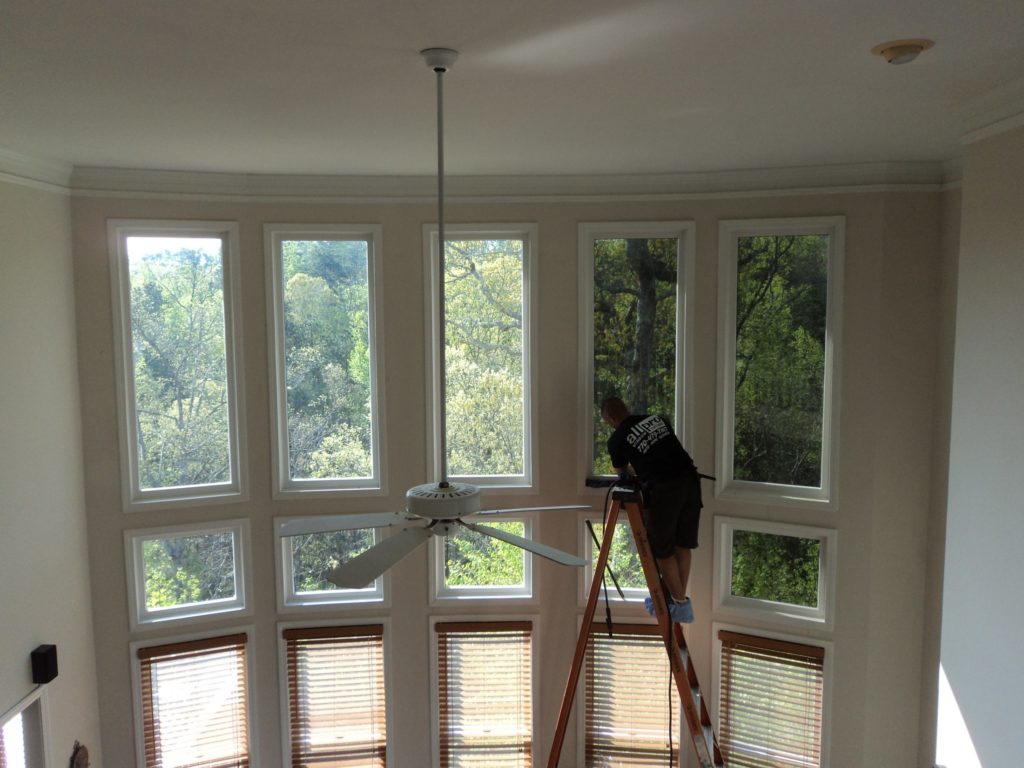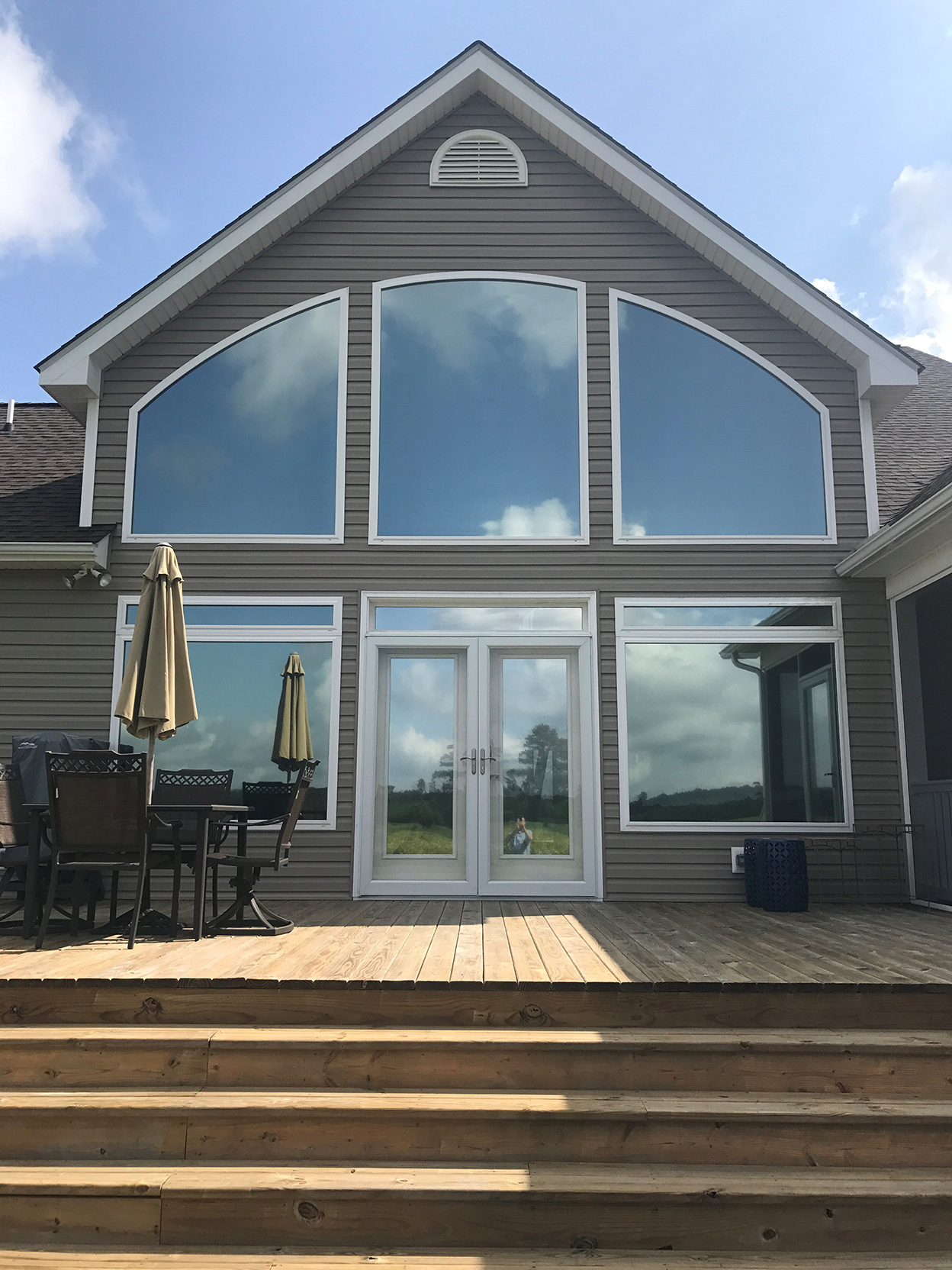Exactly How Residential Window Tinting Improves Your Home's Power Performance
Residential window tinting provides a compelling solution for homeowners seeking to enhance power efficiency within their space. By applying specialized movies to home windows, it successfully reduces warmth transfer, consequently supporting indoor temperatures and lessening the need for extreme home heating or air conditioning. This not only curtails energy intake but also provides an extra comfy environment by minimizing glow. Comprehending the subtleties of how tinting jobs and choosing the ideal type for your home can be pivotal. Oddly, what aspects should one think about before making this investment?
Comprehending Home Window Tinting
Comprehending home window tinting is vital for property owners looking for to improve both convenience and energy effectiveness in their space. Residential Window Tint. Home window tinting entails the application of a slim movie to the inside or outside surface area of glass home windows. This film can dramatically modulate the amount of sunshine and warmth that gets in a home, thus affecting indoor climate problems
There are numerous kinds of home window tinting movies offered, each with distinctive homes. The efficiency of window tinting is typically measured by its Visible Light Transmission (VLT) portion, which suggests exactly how much light can pass via the film.
Benefits of Power Efficiency
Home window tinting not only enhances aesthetics however also plays a significant function in boosting energy effectiveness within domestic spaces. By minimizing heat transfer via home windows, tinted films produce a more secure interior climate, which can result in substantial decreases in energy usage for cooling and heating. This energy performance translates into reduced utility costs, supplying property owners with considerable long-term financial savings.

In addition, window tinting improves the comfort of living spaces. By reducing glare and obstructing unsafe UV rays, colored windows create an even more pleasurable setting, which can bring about boosted wellness for residents. The protection against UV rays also helps maintain furnishings and flooring from fading, adding to the long life of house items.
Exactly How Tinting Functions
Tinting movies run with a mix of advanced products and technologies created to control the amount of solar energy getting in a home. Mostly composed of polyester, these films frequently integrate ceramic or metallic fragments that soak up and show heat. This double ability enables them to substantially lower the infiltration of ultraviolet (UV) rays and infrared radiation while permitting noticeable light to travel through.
The efficiency of window tinting is gauged by its solar warmth gain coefficient (SHGC), which indicates just how much solar power is sent via the window. Lower SHGC values resource are better as they denote better heat rejection. In addition, window tints can include a selection of shades, permitting house owners to personalize their visual preferences while enhancing energy effectiveness.
Furthermore, these films act as a barrier, avoiding warmth loss during colder months by reflecting interior heat back right into the space. This thermal insulation result matches the cooling benefits acquired throughout warmer months, adding to a balanced indoor climate year-round. By handling solar power successfully, domestic home window tinting not only enhances comfort but also plays a crucial duty in decreasing energy consumption and reducing energy bills.
Picking the Right Color

There are various kinds of window movies readily available, including dyed, metalized, and ceramic. Colored films are cost-efficient but may have restricted longevity. Metalized movies supply far better warmth rejection however can interfere with digital signals. Ceramic this page movies supply excellent warm control without jeopardizing exposure and are highly long lasting, making them a preferred selection.
Noticeable light transmission (VLT) is one more crucial aspect, as it indicates the amount of all-natural light that can travel through the colored glass. Property owners should choose a color with a VLT that enhances their illumination choices while still supplying appropriate glow reduction.
Additionally, examining the solar warm gain coefficient (SHGC) can help determine just how well a tint can block warm from sunlight. A reduced SHGC shows far better warmth control, ultimately boosting power efficiency.
Installment and Upkeep Tips
Correct installment and maintenance are vital parts in making best use of the benefits of residential window tinting. Specialists additionally use specialized techniques and devices, which can enhance the longevity and effectiveness of the tint.
Adhering to installment, maintenance is important to extend the life of the window film. It is recommended to wait at the very least thirty days prior to cleaning the tinted windows to enable the glue to heal fully. When cleaning, utilize a soft fabric and a gentle, ammonia-free cleaner to prevent damaging the film. Stay clear of rough products that could scrape the surface.
Additionally, routine evaluations are valuable. Inspect for any peeling or bubbling, which might suggest inappropriate setup or use in time - Residential Window Tint. Attending to these problems without delay can stop more damage and preserve energy effectiveness. By sticking to these installment and maintenance suggestions, home home owners can guarantee their window tinting remains to provide significant power savings and convenience for several years ahead.
Final Thought
In final thought, domestic home window tinting offers as an efficient solution for improving energy performance within homes. By lowering heat transfer and blocking dangerous UV rays, window movies add to decrease energy consumption and enhanced indoor comfort.
Window tinting includes the application of a slim film to the interior or outside surface area of glass windows. By minimizing warm transfer via windows, tinted movies develop an extra secure indoor climate, which can lead to considerable reductions in power consumption for home heating and cooling.The performance of home window tinting is measured by its solar warm gain coefficient (SHGC), which indicates exactly how much solar energy is transferred through the window. By taking care of solar power effectively, property window tinting not just improves convenience yet likewise plays a vital duty in reducing power consumption and reducing utility costs.
By decreasing warm transfer and blocking dangerous UV rays, home window movies contribute to decrease energy intake and boosted interior comfort.
Comments on “Residential Window Tint: A Guide to Picking the Right Shade”